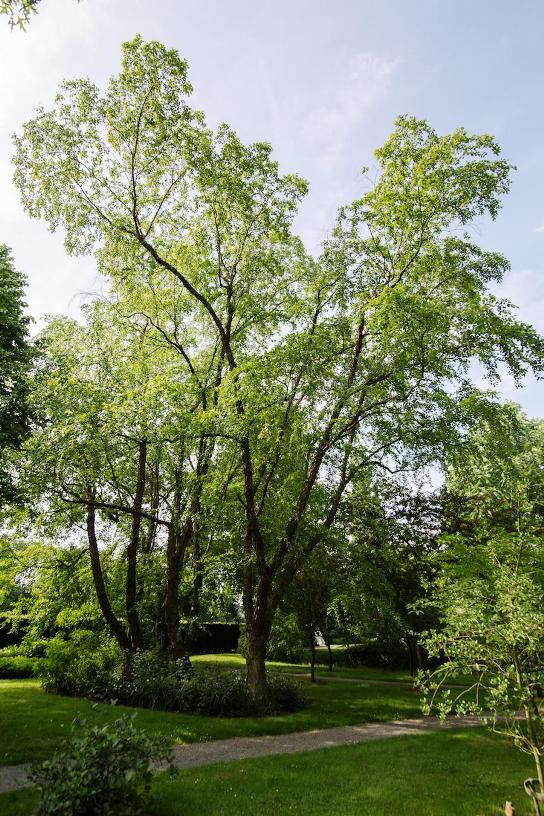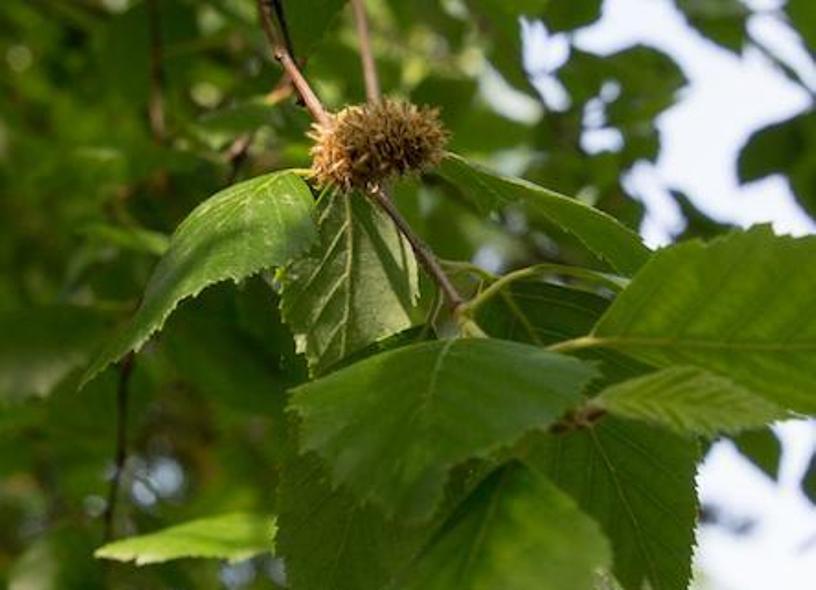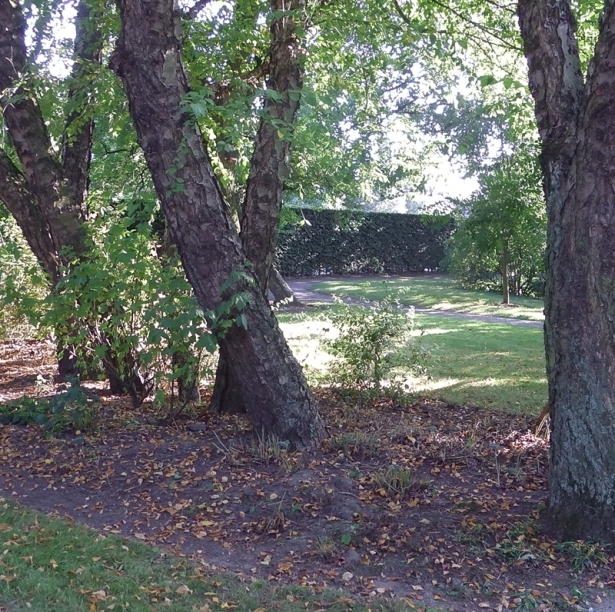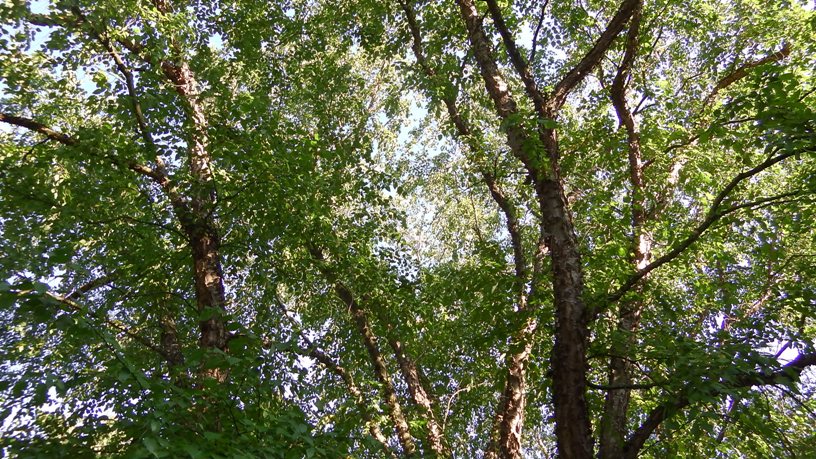River Birch or Black Birch
Betula nigra
Birch family (Betulaceae)
The stories related to this plant are still being edited.
Themes
Crown jewel in the Von Gimborn Arboretum.
The sap makes a refreshing drink and can also be concentrated into a syrup or sugar. The sap can be fermented to make birch beer or vinegar.
In the past a salve was made by boiling the buds until they were thick and pasty, sulphur was added and this was then applied externally to skin sores and ringworm. The leaves were chewed, or used as an infusion, in the treatment of dysentery.
Betula nigra has an extensive root system and is sometimes planted to control soil erosion along the banks of streams. Wood is light, strong, close grained and hard, but it contains many knots because of the numerous branches along the trunk. Young branches are used to make besoms, whisks etc. Birch tar oil is used to process leather to Russia leather - this leather treatment process is of Russian origin.
The aromatic and aliphatic hydrocarbons in birch tar are irritating to the skin. Not to be used by people with oedema or poor kidney or heart function.
The American region of the Great Lakes and the Laurentian Plateau is the native area for the birch including the black or red birch. Indian tribes, the Ojibwe (Canada) and Chippewa (US), made extensive use of these trees and hence the nickname 'Birch bark people' was given to the Chippewa.
Very old strips of birch bark belonging to the Midewiwin (an organised yet secret medicine society) depict the dreams and totem symbols of the Ojibwe (Canada) or Chippewa (US) Indian tribes.
Details
| Description: | Tree, up to 20 m. |
|---|---|
| Distributions: | Eastern north america |
| Habitat: | On floodplains, marshy lowlands and along streams. |
| Year cycle: | Perennial (polycarpic decidous) |
| Hardiness: | Colder than -4 f (very hardy) |
| Flowering period: | April |
| Flower color: | Brown, green |
| Notes on flowers: | Monoecious flowers appear in brown, pendent male catkins and smaller, upright, greenish female catkins. |
| Fruiting period: | Juni |
| Fruit color: | Not applicable |
| At its best: | September - november |
Sources
http://www.missouribotanicalgarden.org/PlantFinder/PlantFinderDetails.aspx?kempercode=x800,https://www.rhs.org.uk/Plants/2258/Betula-nigra/Details,
http://hort.ufl.edu/trees/BETNIGA.pdf,
http://www.pfaf.org/user/Plant.aspx?LatinName=Betula+nigra,
www.bomengids.nl,
www.nfs.unl.edu,
www.indianen.eu,
https://www.rhs.org.uk/Plants/2258/Betula-nigra/Details,
http://hort.ufl.edu/trees/BETNIGA.pdf,
Dendrologie van de lage landen - Jan de Koning en Wim van den Broek, Bomen hun vorm en kleur - Dr. B.K. Boom en H.



